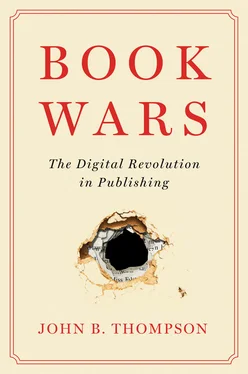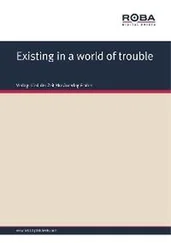1 ...6 7 8 10 11 12 ...34 But the digital revolution did much more than this: it transformed the whole information and communication environment of contemporary societies. By bringing together information technology, computers and telecommunications, the digital revolution enabled ever-increasing quantities of digitized information to be transmitted at enormous speeds, thereby creating new networks of communication and information flow on a scale that was unprecedented. The informational life-worlds of ordinary people were changing as never before. Soon they would be carrying around in their pocket or bag a small device that would function simultaneously as a phone, a map and a computer, enabling them to stay permanently connected to others, to pinpoint their location and get directions, and to access vast quantities of information at the touch of a screen. Traditional creative industries like publishing found themselves caught up in a vortex of change that deeply affected their businesses, but over which they had little or no control. This was a process that was being driven by others – by large technology companies based primarily on the West Coast of the US, far away from the traditional heartlands of Anglo-American trade publishing. These companies were governed by different principles and animated by an ethos that was alien to the traditional world of publishing, and yet their activities were creating a new kind of information environment to which the old world of publishing would have to adapt.
The area of book publishing where the disruptive impact of the digital revolution was first experienced was not in the sphere of consumption, however: it was in the sphere of production. The traditional methods of the publishing industry, whereby a manuscript was received from an author, usually in the form of a typescript, and then edited, copyedited and marked up for the typesetter, were swept aside as the entire production process was turned, step by step, into a digital workflow. Indeed, as more and more authors began to compose their texts by typing on the keys of a computer rather than using a pen and paper or a typewriter, the text became a digital file from the moment of creation – it was born digital, existing only as a sequence of 0s and 1s stored on a disc or in the memory of a computer. The material forms of writing were changing, 2and, from that point on, the transformation of the text that leads to the creation of the object that we call ‘the book’ could, at least in principle, be done entirely in digital form: it could be edited on screen, revised and corrected on screen, marked up for the typesetter on screen, designed and typeset on screen. From the viewpoint of the production process, the book was reconstituted as a digital file, a database. To a production manager in a publishing house, that’s all the book now is: a file of information that has been manipulated, coded and tagged in certain ways. The reconstitution of the book as a digital file is a crucial part of what I call ‘the hidden revolution’. 3By that, I mean a revolution not in the product but rather in the process : even if the final product looks the same as it always did, a physical book with ink printed on paper, the process by which this book is produced is now completely different.
While all these steps in the production process could in principle be done digitally, it was never so easy in practice. Digitization did not always simplify things – on the contrary, it often made them more complex. The digital world, with its plethora of file types and formats, programming languages, hardwares, softwares and constant upgrades, is in many ways more complicated than the old analogue world of print. A central part of the history of the publishing industry since the early 1980s has been the progressive application of the digital revolution to the various stages of book production. Typesetting was one of the first areas to be affected. The old linotype machines, which were the standard means of typesetting in the 1970s and before, were replaced in the 1980s by big IBM mainframe typesetting machines and then, in the 1990s, by desktop publishing. Typesetting costs plummeted: whereas, in the 1970s, it typically cost $10 a page to get a book typeset from manuscript, by 2000 it was costing between $4 and $5 a page, despite the decrease in the value of the dollar produced by two decades of inflation. While the shift was decisive and dramatic, it was a confusing time for those who lived through the changes and found themselves having to adapt to new ways of doing things. The job of the typesetter was redefined and lines of responsibility were blurred. Some of the tasks formerly carried out by typesetters were eliminated and others were thrown back on in-house production staff, who suddenly found themselves on the front line of the digital revolution in publishing, obliged to use new technologies and learn new programmes that were themselves constantly changing.
By the mid-1990s, many of the technical aspects of book production, including typesetting and page design, had been thoroughly transformed by the application of digital technologies. Progress was more erratic in other areas, such as editing and printing: here too there were aspects of the workflow that became increasingly digital in character, though in ways that were more complex than a one-way shift from analogue to digital. While many authors were composing texts on computers and hence creating digital files, their files were often too full of errors for publishers to use. It was often easier and cheaper for the publisher to print out the text, edit and mark-up the printed page, and then send the edited and marked-up manuscript to a compositor in Asia who would re-key the text and add the tags for the page layout. So while in principle the author’s keystrokes were the point at which the digital workflow could begin, in practice – at least in trade publishing – the digital workflow typically began at a later point, when the edited and marked-up manuscript was re-keyed by the compositor, who supplied the publisher with a file that included additional functionality.
Printing is another area where digitization had a huge impact, though again in ways that were more complex than a simple one-way shift from analogue to digital. Until the late 1990s, most publishers used traditional offset printing for all of their books. Offset has many advantages: print quality is high, illustrations can be reproduced to a high standard and there are significant economies of scale – the more you print, the lower the unit cost. But there are disadvantages too: most notably, there are significant set-up costs, so it is uneconomic to print small quantities. So backlist titles that were selling a few hundred copies or less per year were commonly put out of print by many publishers, and the large trade houses often drew the line much higher. It simply wasn’t economic for them to keep these books in print, taking up space in the warehouse and reprinting in small quantities if and when the stock ran out.
The advent of digital printing changed all that. The basic technology for digital printing had existed since the late 1970s, but it wasn’t until the 1990s that the technology was developed in ways that would enable it to become a serious alternative to the traditional offset presses. As reproduction quality improved and costs came down, a variety of new players entered the field, offering a range of digital printing services to publishers. It was now possible to keep a backlist title in print by sending the file to a digital printer who could reprint small quantities – 10, 20, 100 or 200 copies, far fewer than would have been possible using traditional offset methods. The unit costs were higher than they were with traditional offset printing but still manageable for the publisher, especially if they were willing to raise the retail price. It was even possible to turn the traditional publishing fulfilment model on its head: rather than printing a fixed quantity of books and putting them in a warehouse to wait for them to be ordered and sold, the publisher could give the file to a print-on-demand supplier like Lightning Source, who would hold the file on its server and print a copy of the book only when it received an order for it. In this way, the publisher could keep the book permanently available without having to hold stock in a warehouse: physical stock was replaced by a ‘virtual warehouse’.
Читать дальше












